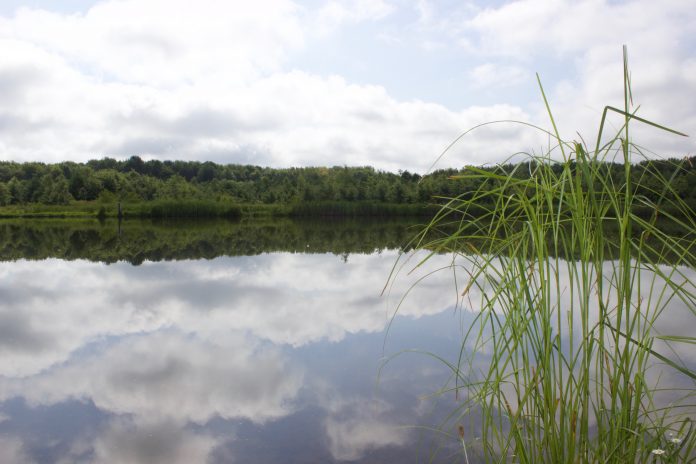
Anytime is a good time to get out and inspect your pond, especially if you are noticing lower water levels. Hopefully, with this mild winter, you have not been cooped up and have been able to monitor your pond regularly.
We have had a rather dry winter as well and maybe that is the cause for lower water levels in your pond. Don’t fret, as the spring showers should be right around the corner. But, with some rain recently, springs are recharging and may have begun refilling your pond already.
Keeping your pond dam well-maintained and in good condition allows for easier inspection and maintenance. Following are some tips for maintaining a good strong pond:
– Always establish, control and maintain proper grass vegetation on and around your pond dam. If bare spots appear from any erosion, reseed them immediately.
– Keep the primary spillway clear of debris to eliminate it from clogging and causing overtopping to your pond.
– Keep the emergency spillway grass covered at all times and check it after significant rain events when it is used. Mow it at least three times per year to discourage woody species.
– Ensure that concrete is sound, not scaling, deteriorating and make sure it is not scoured.
– Inspect the drop structures, emergency spillways, embankments and berms. Replace deteriorating boards, channels, pipes, trash racks and any other components.
– Check for holes in the dam fill from animals such as groundhogs, muskrats and even beaver. These holes can greatly reduce the strength of the dam and create the pond to leak. Muskrats and groundhogs can create tunnels long distances, creating and easy path for the water to seep through, further saturating the pond dam fill material.
– Do not allow any woody vegetation to become established on the dam as the roots can channel throughout it and created seepage and leaks.
– Look for excessive settlement and seepage, especially on the downstream toe of the dam and any evidence of piping around any outlet pipes. This is a quick way for pond failure to happen.
It is very important to always inspect and properly maintain everything on your pond. Remember to always consider that there can be a threat to downstream neighbors and land that you could be responsible for if something were to happen.












